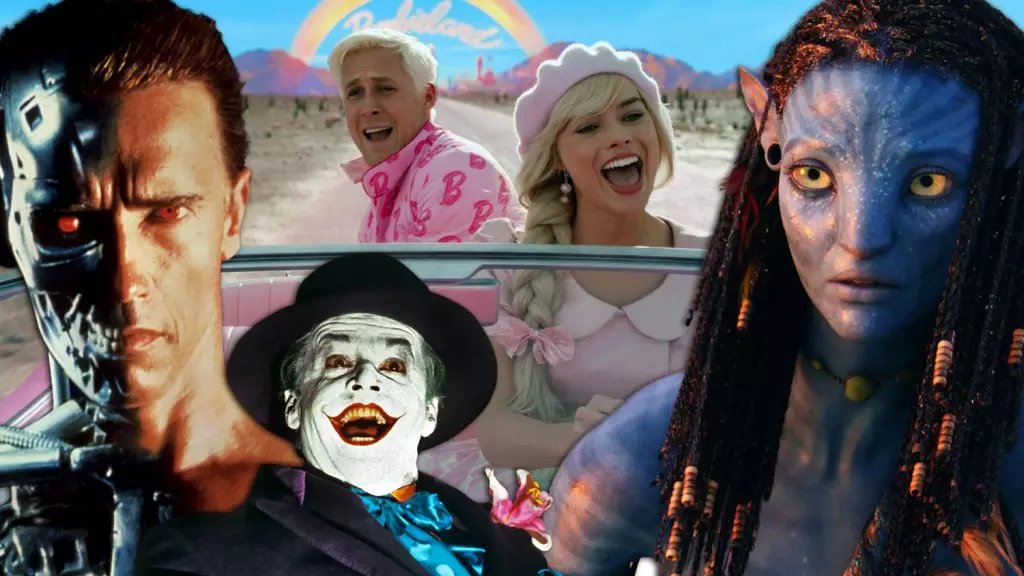Over the past several decades, the landscape of cinema has dramatically shifted, particularly in terms of what viewers flock to the box office to see. A recent analysis reveals a clear trend among the highest-grossing films in North America, emphasizing the dominance of franchises, particularly in the superhero, animated, and sci-fi realms. The newest entry in this illustrious list, “Inside Out 2,” released in 2024, signifies not only box office success but also an evolving narrative in contemporary film themes.
Examining the box office figures since 1977, it’s evident that studios have gravitated towards predictable formulas that mitigate financial risks. Recent entries, such as Marvel franchises and the expansive “Star Wars” universe, continue to rake in considerable profits. “Inside Out 2,” produced by Walt Disney Studios, grossed an impressive $652 million within its opening weeks, showcasing how nostalgic properties and sequels often lead to substantial financial payoffs.
However, this pattern also raises an intriguing debate about creativity in Hollywood. While big-budget spectacles draw audiences, there’s a growing concern that smaller, innovative films may struggle to find an audience amidst the noise of franchise fever. The box office may reflect financial success, but it also brings into focus questions surrounding artistic merit and diversity in storytelling.
A significant portion of the highest-grossing films revolves around established franchises, with superhero films consistently leading the pack. For instance, films like “Avengers: Endgame” and “Spider-Man: No Way Home” have triumphed in ticket sales while building expansive universes that captivate audiences. Beyond the superhero genre, the “Star Wars” saga continues to resonate with fans old and new, further proving the importance of familiar narratives in attracting box office sales.
This reliance on franchises poses a conundrum for the film industry: while profits soar due to equating brand perception with quality, what happens to original screenplays and fresh voices? This tendency toward iteration could risk creating a cinematic landscape that lacks innovation and risks disenfranchising viewers who crave originality.
Animation’s Ascendancy: Family Films That Captivate
Animation has consistently proven to be a lucrative market, significantly driven by the appeal of family-friendly content. The financial successes of animated features, particularly those from Disney and Pixar, exemplify that when stories are paired with visual artistry, the results can be astonishing. From “Frozen” to the latest “Toy Story” installments, the allure of animation not only draws in families but also offers storytelling that can resonate with all ages.
Figures from the box office underscore this phenomenon, as films like “The Lion King” and “Frozen II” continue to set records. This trend reinforces a critical aspect of box office performance: the ability to engage varied demographics is key to a film’s financial success.
The Comparative Landscape: Classic Versus Contemporary
As box office trends evolve, it’s beneficial to reflect on how contemporary successes compare to classics of prior eras. Films from the late 20th century often focused on standalone narratives that didn’t hinge on sequels or prequels, such as “Titanic” and “Jurassic Park.” Over time, the industry’s pivot from these singular stories to franchise-oriented storytelling reflects changing audience appetites, where familiarity often breeds contentment.
While today’s cinematic powerhouse films may overshadow earlier classics in raw revenue, they also risk reducing the diversity of film experiences available to audiences. Nostalgia may be a boon for attendance, yet the sweeping nature of franchise dominance may inadvertently lead to a homogenized viewing experience.
As we move forward into the ever-evolving world of cinema, one must ponder the next trends on the horizon. Will original narratives find a foothold in a franchise-driven marketplace, or will they continue to battle for relevance against established giants? Understanding these dynamics not only aids in analyzing box office performances but also prepares audiences and filmmakers alike for future developments.
With each new film released, the question remains: how will they shape the cultural conversation while simultaneously contributing to or challenging the existing patterns of box office success? The interplay of storytelling, creativity, and commercial viability will surely define the future stages of cinema for years to come.

